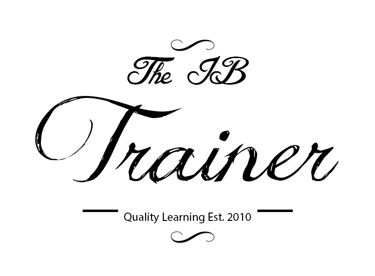How Your £5,000 Became a Business Empire
Discover internal sources of finance through real UK business examples. Learn about personal funds, retained profits, and asset sales for IB Business Management.
IB BUSINESS MANAGEMENTIB BUSINESS MANAGEMENT MODULE 3 FINANCE AND ACCOUNTS
Lawrence Robert
11/15/20256 min read


How Your £5,000 Became a Business Empire (And Why Most UK Startups Still Bootstrap)
In 2024, personal savings and operating revenue remained the most popular funding sources for UK small businesses. Not bank loans. Not dragons from a TV show throwing cash at you. Just... people using their own money.
Which means right now, there's probably someone in your town who's taken their life savings, crossed their fingers, and started a business. Maybe it's that new bubble tea shop that just opened. Maybe it's your mate's mum who started selling homemade candles online. Either way, they're doing what millions of entrepreneurs do: funding their business from the inside.
This is internal sources of finance - the "we'll figure it out ourselves" approach to business funding.
What Are Internal Sources of Finance?
Let's start with the basics. Sources of finance is just a posh way of saying "where businesses get their money from." And internal sources? That's money that comes from inside the business itself, using its own resources.
If you need money for a night out, you could either check your own wallet (internal) or ask your parents for a tenner to start with (external). Internal sources are the business equivalent of checking your own wallet first.
The three main types are:
Personal funds (your own savings)
Retained profit (money the business has made and kept)
Sale of assets (flogging stuff you own)
What is brilliant about internal sources? No interest charges. No paying back loans. No giving away chunks of your company to investors. The not-so-brilliant thing? There's usually not that much of it.
Personal Funds: The "I Have Faith in This" Money
Right, imagine you're starting a business. Maybe you want to open a café, or launch an app, or sell vintage clothes online. How do you fund it?
For most people, especially sole traders and partnerships, the answer is simple: raid your savings account.
Personal funds are exactly what they sound like - money that business owners invest from their own pockets. Their savings. Maybe that birthday money they've been hoarding since they were twelve, or the dividends of those shares that finally came good after 20 years. The proceeds from selling their old car. Whatever they've got stashed away.
In 2024, personal savings remained the most popular startup funding method in the UK, which tells you everything you need to know about how most businesses actually begin. Not with venture capitalists in fancy boardrooms, but with someone transferring money from their personal account to a new business account and hoping for the best.
If you're trying to get a loan from a bank and you haven't put any of your own money in, they'll laugh you out of the building. Banks want to see that you've got "skin in the game"- that you're willing to risk your own cash because you believe in your idea. If you're not willing to risk it, why should they or why should anyone for that matter?
The massive drawback? Most people don't have hundreds of thousands of pounds lying around. The top UK startups in 2025 needed an average of £25 million in funding to become successful, which is... slightly more than what's in your average person's savings account. This is why personal funds are brilliant for starting small businesses, but you'll need other sources to actually scale them.
Retained Profit: The "We Made It, We Keep It" Strategy
Now we're talking about established businesses - ones that are actually making money. And when you make profit, you've got a choice: give it all to the owners/shareholders as dividends, or keep some of it in the business.
Retained profit is the money a business makes and then doesn't give away. Instead, it reinvests it. It's profit that stays put, ready to be used for growth.
For example, if your business makes £50,000 in net profit and pays £10,000 in dividends to shareholders, you've got £40,000 in retained profit. That £40,000 sits there in your business, appearing on your statement of profit or loss (your profit and loss account) as "retained earnings."
Retained profit is basically free money for growth. You've already earned it, it belongs to the business, and you can use it however you want - no interest payments, no giving away ownership stakes, no begging investors for cash.
UK businesses that retain and reinvest their profits can fund research and development, expand operations, or build up financial reserves without relying on external financing. It's the business equivalent of saving up to buy something instead of putting it on a credit card.
IB Business Management Real-world example: Greggs (yes, that Greggs again) retained profits to help fund their massive expansion - they opened 226 new shops in 2024 alone. They didn't need to borrow millions or sell half the company to investors. They'd made enough profit over the years to fund their own growth. That's the power of retained profit.
However, you can only use retained profit if you're actually making profit. New businesses? Nope. Struggling businesses? Definitely not. This is a source of finance for established, successful companies that have money left over after paying all their bills and giving shareholders a bit of a reward.
Research shows very few businesses make profits in their first 2-3 years of trading, which is why retained profit isn't an option for startups. You need to survive first, then you can start keeping the profits.
Sale of Assets: The "We Don't Need This Anymore" Approach
Alright, last one. Sometimes businesses need cash quickly, and they look around and think, "Do we really need all this stuff?"
Sale of assets is exactly what it sounds like: selling off non-current assets (stuff that lasts more than 12 months) to raise cash. We're talking about:
Property and buildings (maybe you've got a warehouse or a garage you're not using)
Equipment and machinery (old production lines, outdated computers)
Vehicles (that fleet of delivery vans that's been sitting there)
Let's say you run a supermarket chain, and you've got a bunch of old delivery trucks that are knackered and inefficient. You could just scrap them, or you could sell them and use the cash to buy newer, better technology. You're getting rid of something you don't need anyway, but now you've got money to reinvest.
This is particularly useful when assets become obsolete - they're outdated, inefficient, or just not needed anymore.
IB Business Management Real-world example: In 2025, some US tech companies like Apple and Nvidia were buying up office properties at discounted prices, while other companies were selling office buildings they no longer needed. That's asset sales in action - one company's unwanted property becomes another company's bargain.
The risk? You can seriously compromise your business if you sell assets you actually need. Imagine selling your delivery vans to raise cash, but then you can't deliver products to customers. Brilliant source of short-term finance, terrible long-term strategy.
It's a bit like selling your laptop to raise money for your summer Marbella holidays. Yeah, you've got cash now, but how are you going to write your IB Business Management essays?
Why Internal Sources Matter (And Why They're Not Enough)
Here's the honest truth about internal sources of finance: they're brilliant for keeping control of your business. No one owns a chunk of your company except you. You're not paying interest to banks. You're not answering to investors.
But - and this is a big but - internal sources are limited. Personal savings can only stretch so far, and just 5% of UK businesses received venture capital funding in 2024, compared to 13% in 2023, meaning most businesses are making do with what they've got internally.
Using retained profit to fund business expansion helps you avoid taking on debt and the corresponding interest payments, which sounds great until you realise you simply don't have enough retained profit to fund the massive expansion you're planning.
That's why most successful businesses use a mix of internal and external sources. They start with personal funds, build up some retained profit, maybe sell a few old assets, and then they look externally for loans or investors when they're ready to properly scale.
Think about Greggs again - they're investing £300 million in 2025. That's coming from a combination of their retained profits and other funding sources. Pure internal financing has its limits.
The Bottom Line For Your IB Business Management Course
Internal sources of finance are about self-sufficiency: using what you've got before asking for help. It's:
Personal funds when you're starting out (your savings, basically)
Retained profit when you're established and making money (keeping profits in the business instead of paying them all out)
Sale of assets when you need cash and have stuff you don't need anymore (flogging the old equipment)
The advantages? No interest, no loss of control, no begging banks for money, no calling Tony Soprano for a loan. The disadvantages? Limited amounts, not available to struggling businesses, and sometimes you sell stuff you actually needed.
Research shows that retained profit helps companies maintain greater control over their financial resources and gives them flexibility to make important investment decisions. But every business eventually hits the limits of what it can fund internally.
So next time you walk past a new independent coffee shop or that small business your cousin started, remember: they probably started with internal sources. Their own savings, maybe some retained profit from a previous venture, perhaps selling their old van to raise cash.
It's not glamorous, it's not Dragon's Den, but it's how most businesses actually fund themselves. And now you know the theory behind it.
Stay well,
IB Complete Support Courses, a new generation of affordable support materials directed at IB students seeking grades 6 or 7.
© Theibtrainer.com 2012-2025. All rights reserved.
